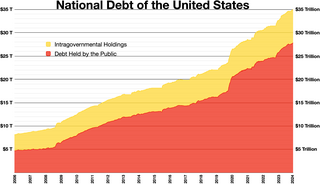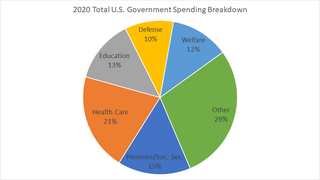
The Qatar Armed Forces are the military forces of the State of Qatar. Since 2015, Qatar has implemented mandatory military conscription with an average of 2,000 graduates per year. As of 2010, Qatar's defence expenditures added up to a total of $1.913 billion, about 1.5% of the national GDP, according to the SIPRI. Qatar has recently signed defence pacts with the United States in 2002 & 2013, with the United Kingdom in 2020, and with France in 1994.

The Armed Forces of the Russian Federation, commonly referred to as the Russian Armed Forces, are the military of Russia. In terms of active-duty personnel, they are the world's fifth-largest military force, with 1.15 million and at least two million reserve personnel. According to the United States' Central Intelligence Agency (CIA), "Russia plans to expand its active personnel force to 1.5 million by 2026, which will make it the third largest in the world, after China and India." The country has three primary branches of service: the Ground Forces, the Navy, and the Aerospace Forces, as well as two independent arms of service: the Strategic Rocket Forces and Airborne Forces. In addition, the Special Operations Forces Command was established in 2013, with an estimated strength in 2022 of 1,000, possibly with additional supporting staff.

The national debt of the United States is the total national debt owed by the federal government of the United States to Treasury security holders. The national debt at any point in time is the face value of the then-outstanding Treasury securities that have been issued by the Treasury and other federal agencies. The terms "national deficit" and "national surplus" usually refer to the federal government budget balance from year to year, not the cumulative amount of debt. In a deficit year the national debt increases as the government needs to borrow funds to finance the deficit, while in a surplus year the debt decreases as more money is received than spent, enabling the government to reduce the debt by buying back some Treasury securities. In general, government debt increases as a result of government spending and decreases from tax or other receipts, both of which fluctuate during the course of a fiscal year. There are two components of gross national debt:

The arms industry, also known as the defense industry, military industry, or the arms trade, is a global industry which manufactures and sells weapons and military technology. Public sector and private sector firms conduct research and development, engineering, production, and servicing of military material, equipment, and facilities. Customers are the armed forces of states, and civilians. An arsenal is a place where arms and ammunition – whether privately or publicly owned – are made, maintained and repaired, stored, or issued, in any combination. Products of the arms industry include weapons, munitions, weapons platforms, military communications and other electronics, and more. The arms industry also provides other logistical and operational support.
A black budget or covert appropriation is a government budget that is allocated for classified or other secret operations of a nation. The black budget is an account expenses and spending related to military research and covert operations. The black budget is mostly classified because of security reasons. The black budget can be complicated to calculate, but in the United States it has been estimated to be over US$50 billion a year, taking up approximately 7 percent of the US$700 billion American defense budget.

A military budget, also known as a defense budget, is the amount of financial resources dedicated by a state to raising and maintaining an armed forces or other methods essential for defense purposes.

Government spending or expenditure includes all government consumption, investment, and transfer payments. In national income accounting, the acquisition by governments of goods and services for current use, to directly satisfy the individual or collective needs of the community, is classed as government final consumption expenditure. Government acquisition of goods and services intended to create future benefits, such as infrastructure investment or research spending, is classed as government investment. These two types of government spending, on final consumption and on gross capital formation, together constitute one of the major components of gross domestic product.

The military budget of the United States is the largest portion of the discretionary federal budget allocated to the Department of Defense (DoD), or more broadly, the portion of the budget that goes to any military-related expenditures. The military budget pays the salaries, training, and health care of uniformed and civilian personnel, maintains arms, equipment and facilities, funds operations, and develops and buys new items. The budget funds five branches of the US military: the Army, Navy, Marine Corps, Air Force, and Space Force.
The military budget of Japan is the portion of the overall budget of Japan that is allocated for the funding of the Japanese Self-Defence Forces. This military budget finances employee salaries and training costs, the maintenance of equipment and facilities, support of new or ongoing operations, and the development and procurement of new weapons, equipment, and vehicles.

The United States budget comprises the spending and revenues of the U.S. federal government. The budget is the financial representation of the priorities of the government, reflecting historical debates and competing economic philosophies. The government primarily spends on healthcare, retirement, and defense programs. The non-partisan Congressional Budget Office provides extensive analysis of the budget and its economic effects. It has reported that large budget deficits over the next 30 years are projected to drive federal debt held by the public to unprecedented levels—from 98 percent of gross domestic product (GDP) in 2020 to 195 percent by 2050.

The United States Department of Defense is an executive branch department of the federal government of the United States charged with coordinating and supervising all agencies and functions of the U.S. government directly related to national security and the United States Armed Forces. As of June 2022, the U.S. Department of Defense is the largest employer in the world, with over 1.34 million active-duty service members, including soldiers, marines, sailors, airmen, and guardians. The Department of Defense also maintains over 778,000 National Guard and reservists, and over 747,000 civilians bringing the total to over 2.87 million employees. Headquartered at the Pentagon in Arlington County, Virginia, just outside Washington, D.C., the Department of Defense's stated mission is to provide "the military forces needed to deter war and ensure our nation's security".
The following is a partial accounting of financial costs of the 2003 Iraq War by the United States and the United Kingdom, the two largest non-Iraqi participants of the multinational force in Iraq.

The United States federal budget consists of mandatory expenditures, discretionary spending for defense, Cabinet departments and agencies, and interest payments on debt. This is currently over half of U.S. government spending, the remainder coming from state and local governments.

The Ministry of Defense is a Ministry in Saudi Arabia that is responsible for the protection of national security, interests and sovereignty of the country from external threats as well as the working with all ministries of the state to achieve national security and stability. The current minister of defense is Prince Khalid bin Salman Al Saud, who was appointed on 27 September 2022. The Ministry includes the five service branches of the Saudi Arabian Armed Forces: The Royal Saudi Land Force, The Royal Saudi Air Force, The Royal Saudi Naval Force, The Royal Saudi Air Defense Force and the Royal Saudi Strategic Missile Force.

The military budget of Russia is the portion of the overall budget of Russia that is allocated for the funding of the Russian Armed Forces. This military budget finances employee salaries and training costs, the maintenance of equipment and facilities, support of new or ongoing operations, and development and procurement of new weapons, equipment, and vehicles. According to estimates for the 21 years from 2000, Russia increased its military budget from $9.23bn to $65.9bn, or more than 600 percent. Moscow spends more on the military than any country of the European Union.

The military budget or defence budget of India is the portion of the overall budget of Union budget of India that is allocated for the funding of the Indian Armed Forces. The military budget finances employee salaries and training costs, maintenance of equipment and facilities, support of new or ongoing operations, and development and procurement of new technologies, weapons, equipment, and vehicles.
Military budget of Turkey, Turkey’s Military Budget is at 100.4 billion Turkish liras, or $44.3 billion, former Turkish Defense Minister İsmet Yılmaz said 8 November 2014. He was responding to a question from an opposition party leader, the Nationalist Movement Party’s Ankara deputy Özcan Yeniçeri, who asked how much Turkey had spent on its defense budget since 2002. Yılmaz said Turkey spent about 1.71 percent of its Gross Domestic Product, or the GDP on defense in 2014. Turkey used to spend 3.5 percent of its GDP on defense in 2002.
The economics of defense or defense economics is a subfield of economics, an application of the economic theory to the issues of military defense. It is a relatively new field. An early specialized work in the field is the RAND Corporation report The Economics of Defense in the Nuclear Age by Charles J. Hitch and Roland McKean . It is an economic field that studies the management of government budget and its expenditure during mainly war times, but also during peace times, and its consequences on economic growth. It thus uses macroeconomic and microeconomic tools such as game theory, comparative statistics, growth theory and econometrics. It has strong ties to other subfields of economics such as public finance, economics of industrial organization, international economics, labour economics and growth economics.

Government spending in the United States is the spending of the federal government of the United States, and the spending of its state and local governments.















